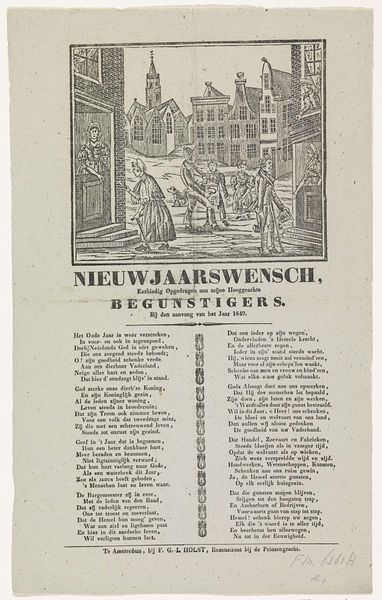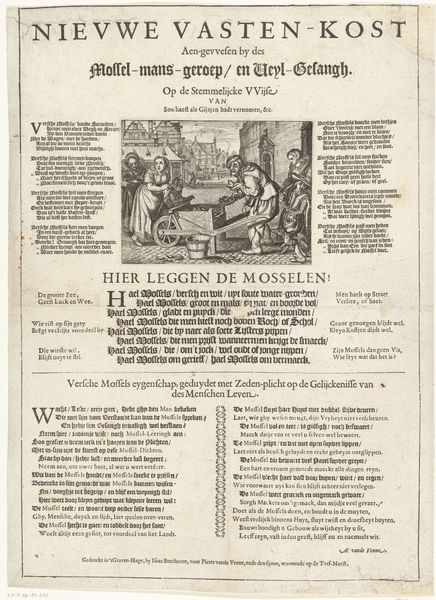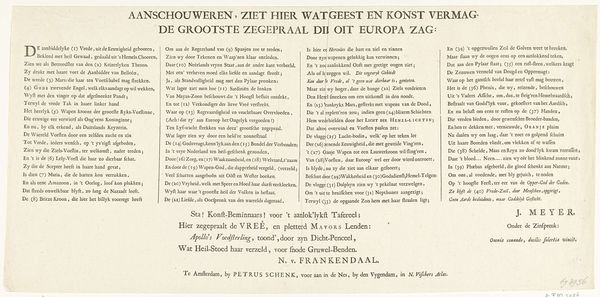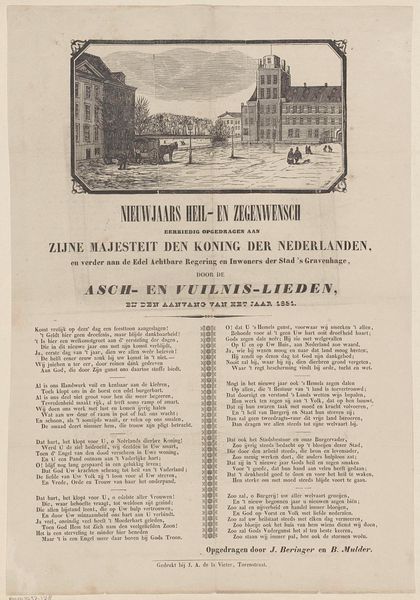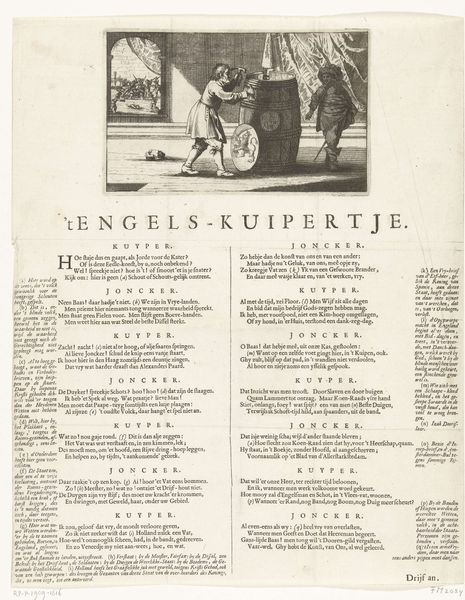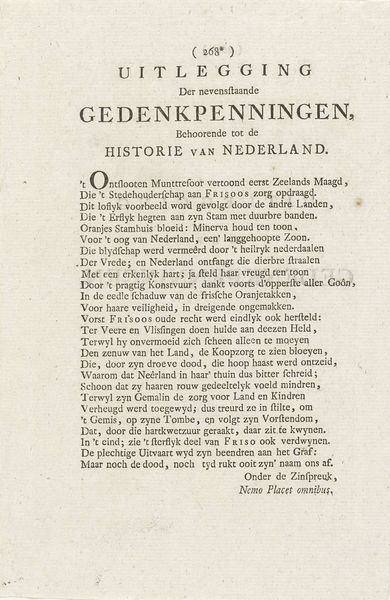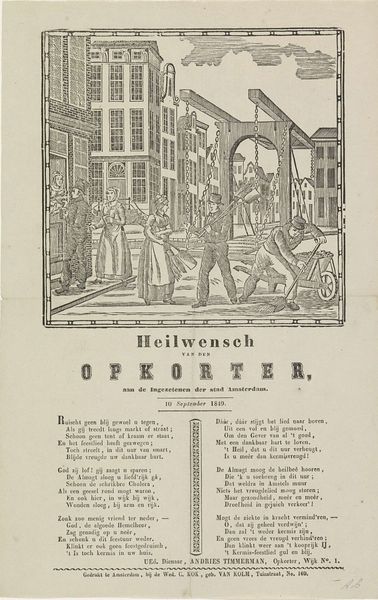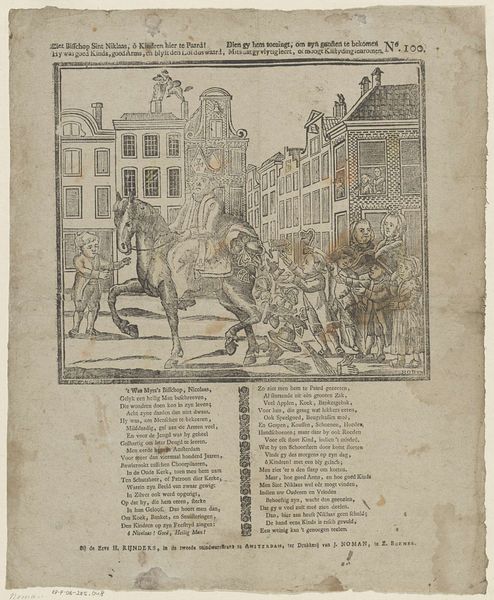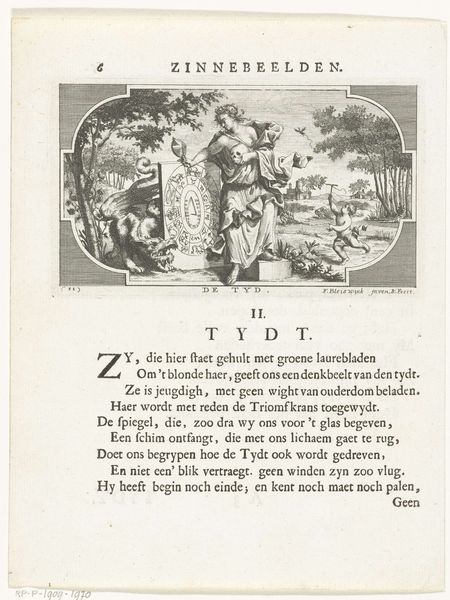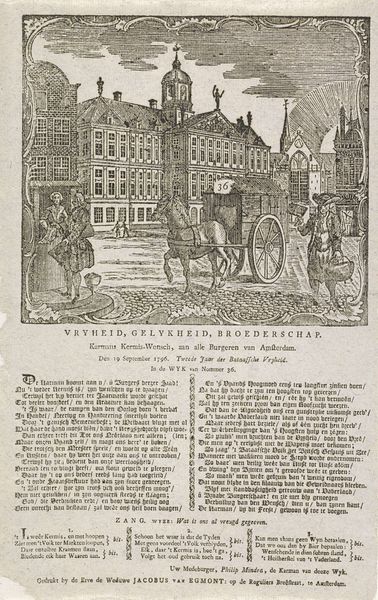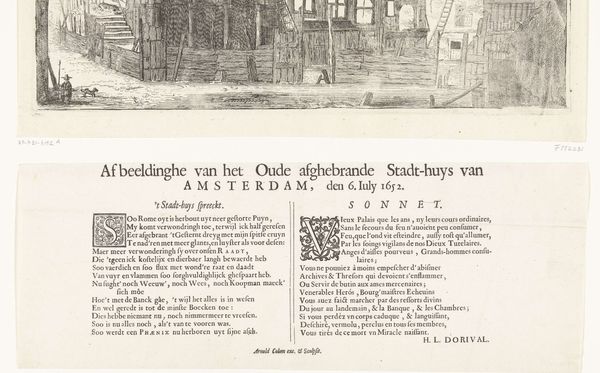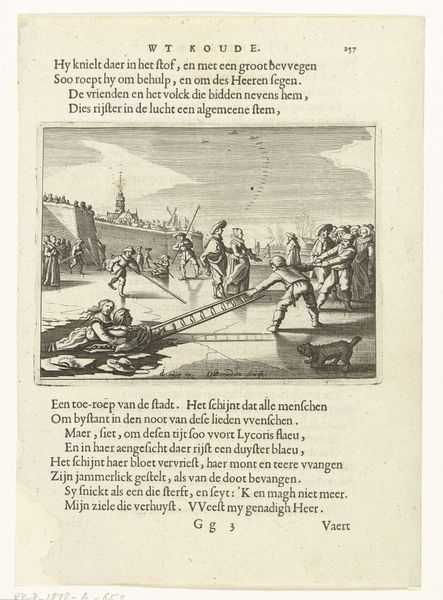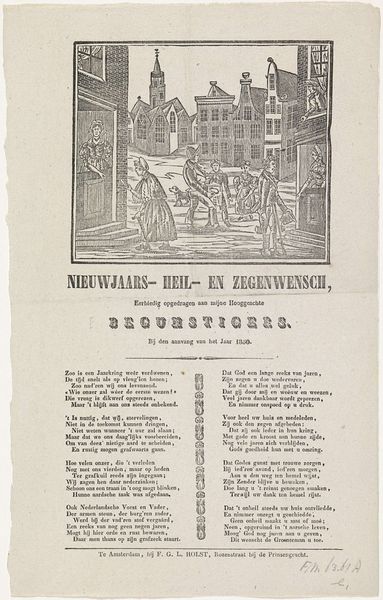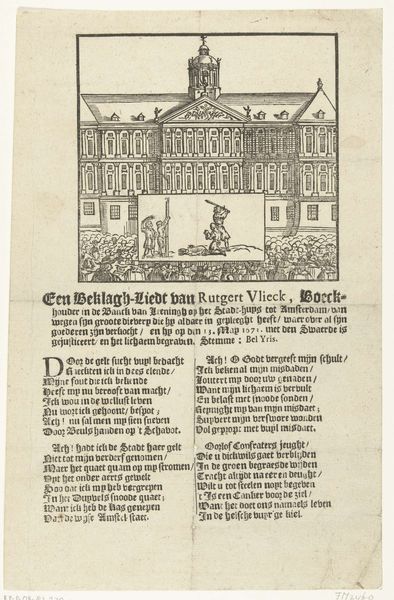
print, etching, engraving
# print
#
etching
#
romanticism
#
cityscape
#
street
#
engraving
Dimensions: height 430 mm, width 248 mm
Copyright: Rijks Museum: Open Domain
This is Frederic Gijzen’s ‘Nieuwjaarswens van de vuilnismannen van Den Haag voor het jaar 1811’, a print made in 1811. The dominant visual experience is the contrast between the detailed architectural street scene and the formal symmetry of the text. The monochromatic palette underscores the graphic nature of the print, creating a sense of austerity. Gijzen's work operates within a complex semiotic system, using the built environment as a signifier of urban order and societal structure. The architectural rendering invites a reading of space and power, where the cleanliness maintained by the sanitation workers reflects broader aspirations for social harmony. Note how the rigid structure of the text below, contrasts with the relative freedom of the depicted scene above. Ultimately, the formal structure serves as a cultural artifact which reflects the values and priorities of its time. Yet the print simultaneously destabilizes traditional hierarchies by foregrounding the role of the working class. This challenges fixed notions of social value, prompting viewers to reconsider their understanding of labor and representation.
Comments
No comments
Be the first to comment and join the conversation on the ultimate creative platform.
